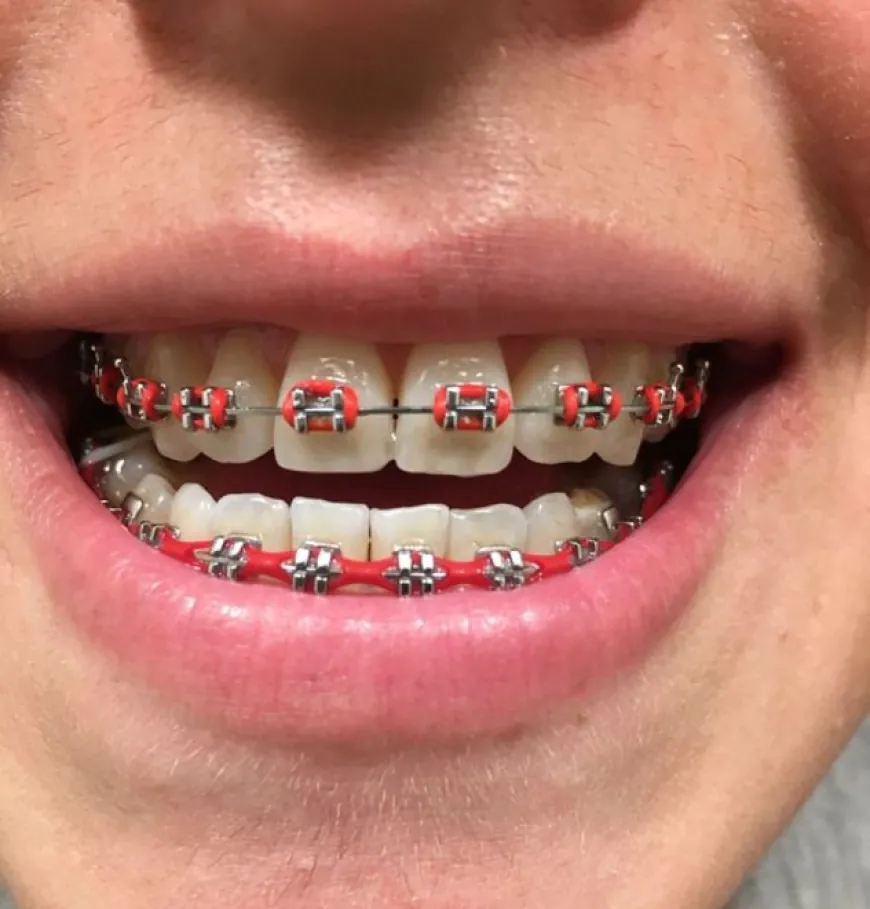Transform Your Smile: The Ultimate Guide to Teeth Braces
Get your teeth fixed in the shortest time possible. Uneven teeth in their right place. Want to know about Teeth Braces costs in Dubai UAE? Visit us now!

A beautiful smile can boost confidence and leave a lasting impression. For those who dream of perfectly aligned teeth, braces are one of the most effective solutions available today. Whether you're a teenager or an adult, the benefits of wearing braces go beyond aesthetics—they can improve oral health, speech, and overall functionality. In this guide, we’ll take you through everything you need to know about braces, from types and costs to maintenance tips and the treatment process.
What Are Braces and How Do They Work?
Braces are orthodontic devices designed to correct issues such as misaligned Teeth Braces Cost in Dubai, crooked bites, and jaw problems. They work by applying continuous pressure on your teeth over some time, gradually moving them into their proper positions. The key components of braces include brackets, wires, and elastic bands, which together guide the teeth toward their ideal alignment.
Orthodontic braces don’t just fix aesthetic problems. They also help with functional issues like overbites, underbites, and crossbites, making it easier to chew, speak, and maintain proper oral hygiene.
Types of Braces: Choosing the Right Option for You:
Braces come in different types, catering to various preferences and budgets. Here are the most common options:
a) Metal Braces:
Traditional metal braces are the most widely used type. Made from high-grade stainless steel, they are durable and effective at treating complex dental issues. They consist of metal brackets glued to the teeth and connected by a wire, which is adjusted periodically to move the teeth.
Pros: Affordable, highly effective
Cons: Highly visible, may cause discomfort initially
b) Ceramic Braces:
Ceramic braces are similar to metal braces, but the brackets are made from tooth-colored ceramic material, making them less noticeable. They’re a popular option for those seeking a more discreet treatment without compromising on effectiveness.
Pros: Less visible than metal braces
Cons: More expensive, can stain if not properly cared for
c) Lingual Braces:
Lingual braces are placed on the inner surface of the teeth (the side facing the tongue) rather than on the front, making them virtually invisible. They are custom-made for each patient, offering a great aesthetic advantage.
Pros: Completely hidden from view
Cons: Expensive, more difficult to clean, may cause speech issues initially
d) Clear Aligners (Invisalign):
Clear aligners like Invisalign have become increasingly popular due to their convenience and appearance. These custom-made, removable trays are worn over the teeth and gradually shift them into place. They need to be worn for 20-22 hours per day and are replaced every 1-2 weeks with a new set.
Pros: Virtually invisible, removable, comfortable
Cons: Expensive, not suitable for all cases, requires discipline to wear consistently
The Treatment Process: What to Expect:
Before getting braces, your orthodontist will conduct a thorough examination of your teeth, including X-rays, photos, and dental impressions. Based on the results, they will develop a personalized treatment plan that outlines the type of braces, the duration of treatment, and the expected outcome.
a) Initial Placement:
Getting braces placed is usually painless, though it may take 1-2 hours. The orthodontist cleans and dries your teeth before attaching the brackets with a special adhesive. Once the brackets are in place, they will thread the archwire through them and secure it with elastic bands.
b) Adjustment Appointments:
Throughout your treatment, you will need to visit your orthodontist for adjustments every 4-6 weeks. During these appointments, the orthodontist will tighten the wires or change the elastic bands to maintain the pressure on your teeth.
c) Duration of Treatment:
The average time for wearing braces is between 18 months to 3 years, depending on the complexity of your case. Factors such as age, the severity of misalignment, and adherence to the treatment plan can impact the duration.
d) Retainers:
After the braces come off, the treatment isn’t entirely over. You will be given a retainer, a custom-made appliance to keep your teeth in their new positions. Retainers can be either removable or fixed, and wearing them as prescribed is crucial to prevent your teeth from shifting back.
Caring for Your Braces: Maintenance Tips:
Braces require diligent care to ensure that your treatment is successful and that your teeth stay healthy throughout the process. Here are some essential maintenance tips:
a) Oral Hygiene:
Brushing and flossing are crucial when you have braces, as food particles can easily get trapped between the wires and brackets. Use a soft-bristled toothbrush and fluoride toothpaste, and consider investing in a water flosser to clean your teeth effectively.
b) Avoid Certain Foods:
Sticky, hard, and chewy foods can damage your braces or cause discomfort. Avoid chewing gum, hard candies, popcorn, and foods like caramel or taffy. Cut crunchy fruits and vegetables into smaller pieces to reduce strain on your brackets.
c) Dealing with Discomfort:
It’s common to experience some discomfort after getting braces or after an adjustment. Over-the-counter pain relievers and orthodontic wax can help alleviate soreness or irritation caused by the brackets or wires.
Benefits of Wearing Braces: More Than Just Aesthetics:
While many people seek braces for cosmetic reasons, the benefits go beyond an improved appearance. Here are some key advantages:
- Better Oral Health: Straight teeth are easier to clean, reducing the risk of cavities and gum disease.
- Improved Bite Function: Braces correct bite issues, making it easier to chew and speak properly.
- Boosted Confidence: A straight smile can have a positive impact on your self-esteem and overall quality of life.
Final Thoughts:
For many people, the decision to get braces is life-changing. The process may take time and require effort, but the results—both in terms of aesthetics and oral health—are worth it. If you’re considering braces, consult with an orthodontist to discuss your options and develop a treatment plan that suits your needs.












